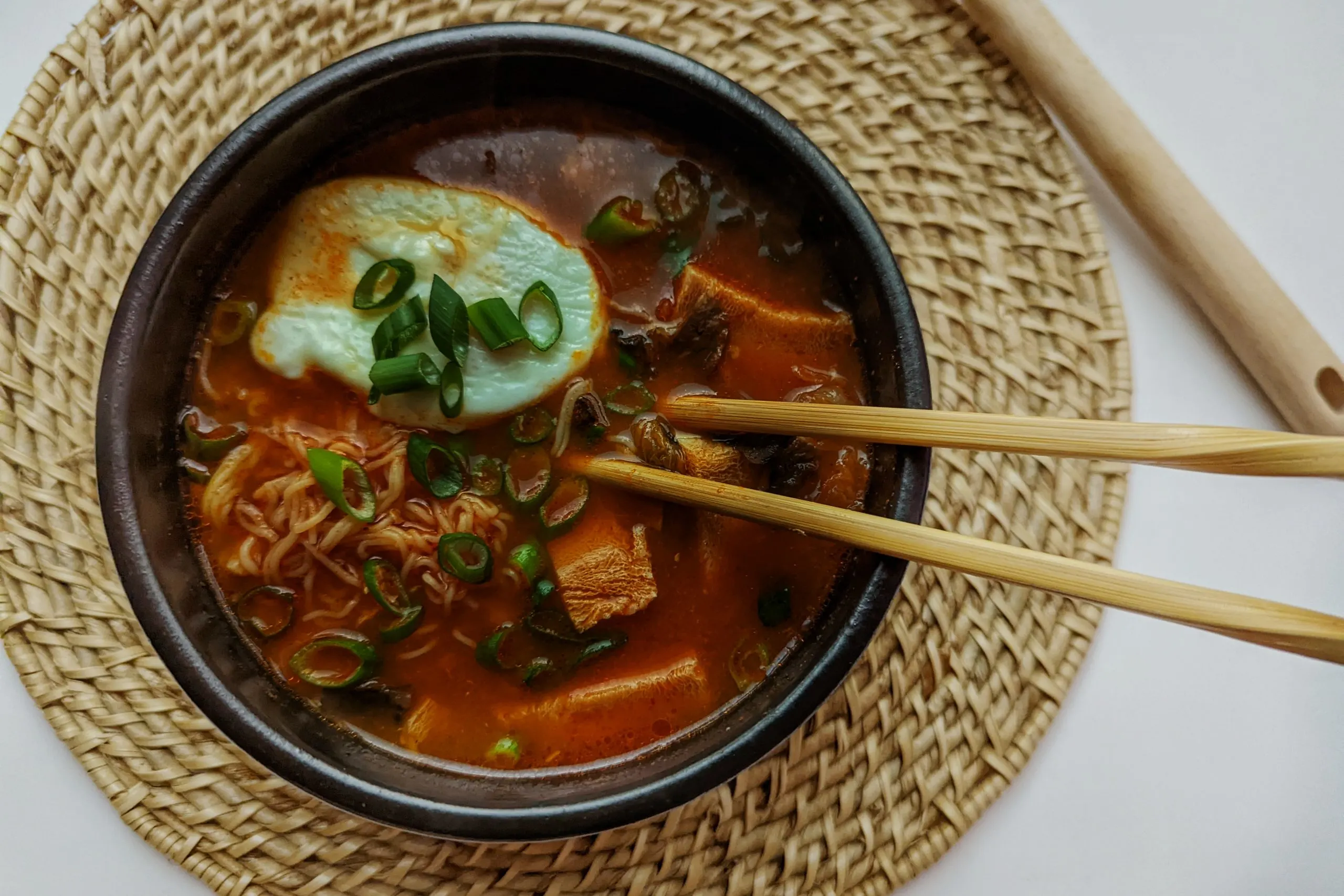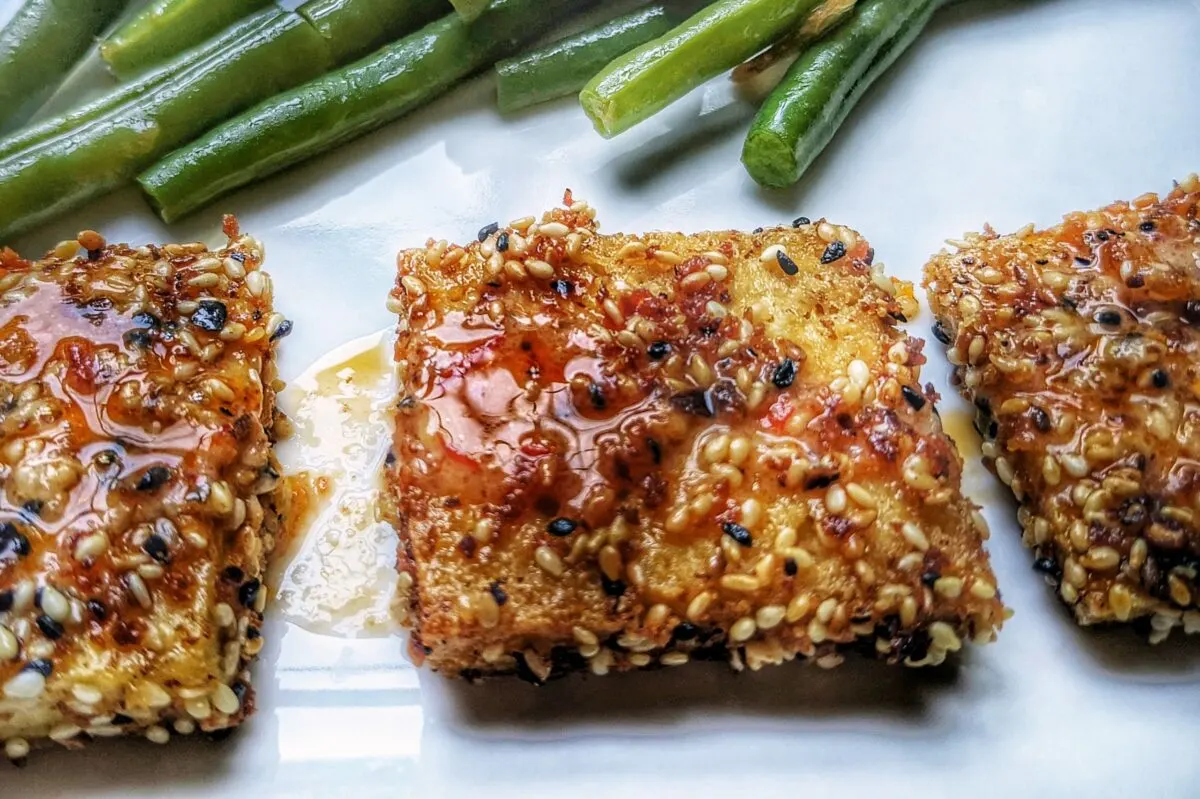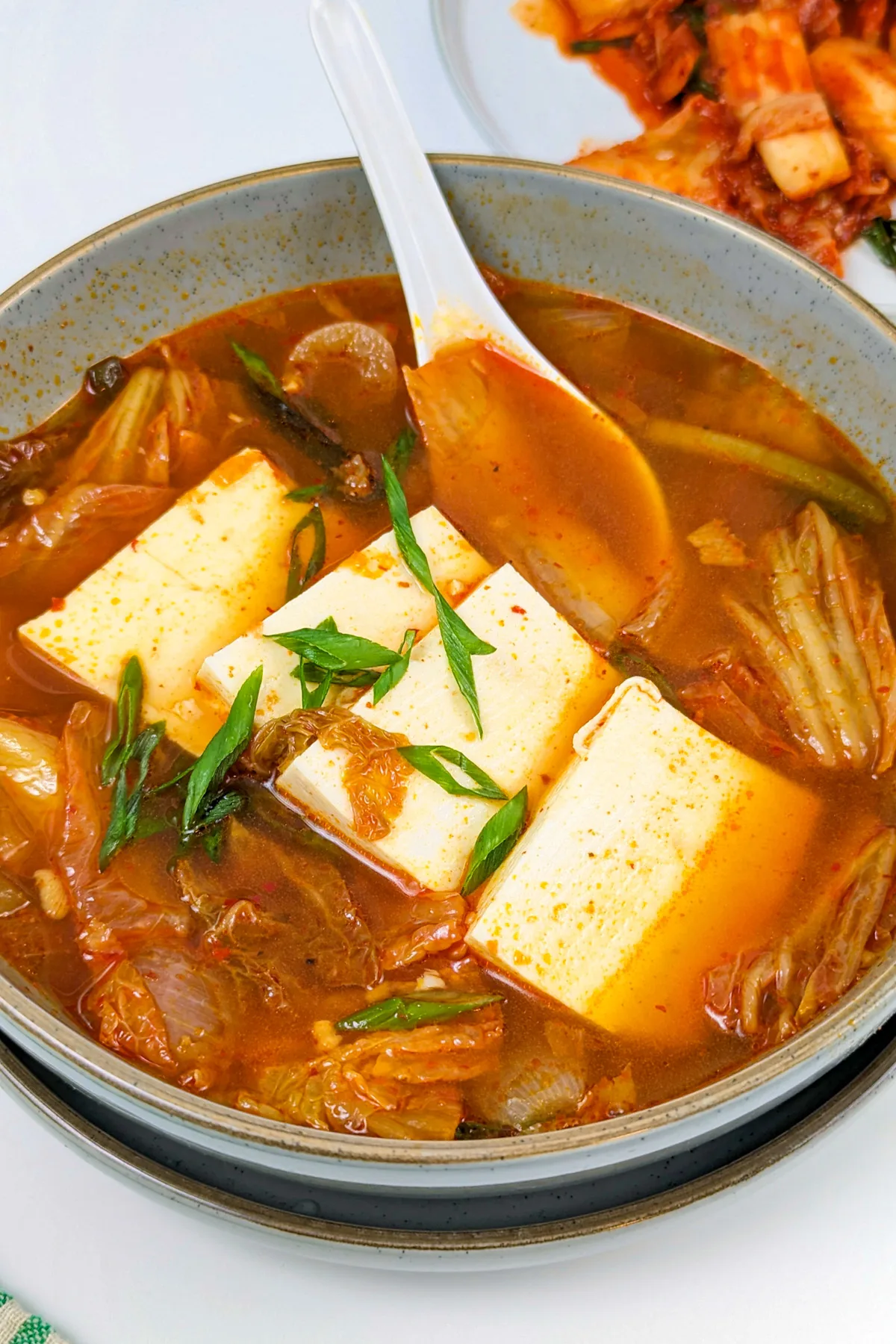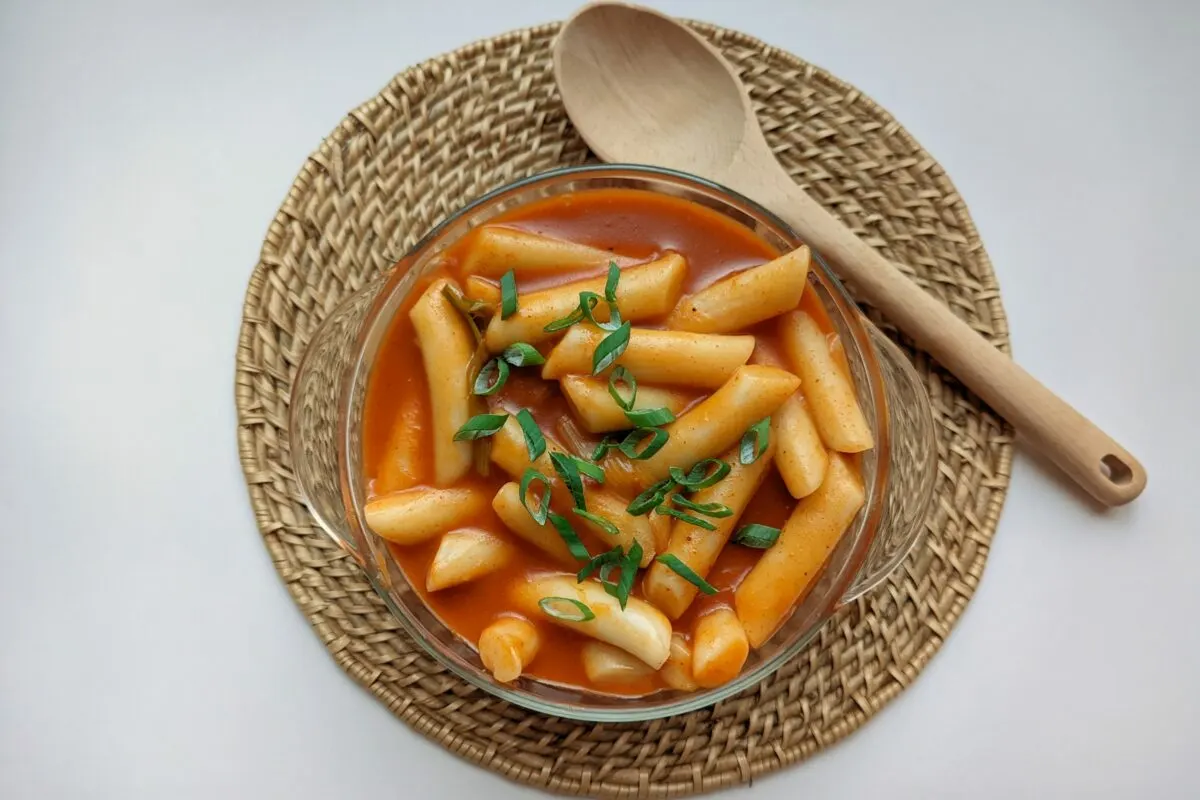Cheesy Tteokbokki is comfort food at its best and features traditional Korean tteokbokki simmered in a sweet and spicy sauce and smothered with gooey, melted mozzarella cheese for this tasty one-pot meal or appetizer.
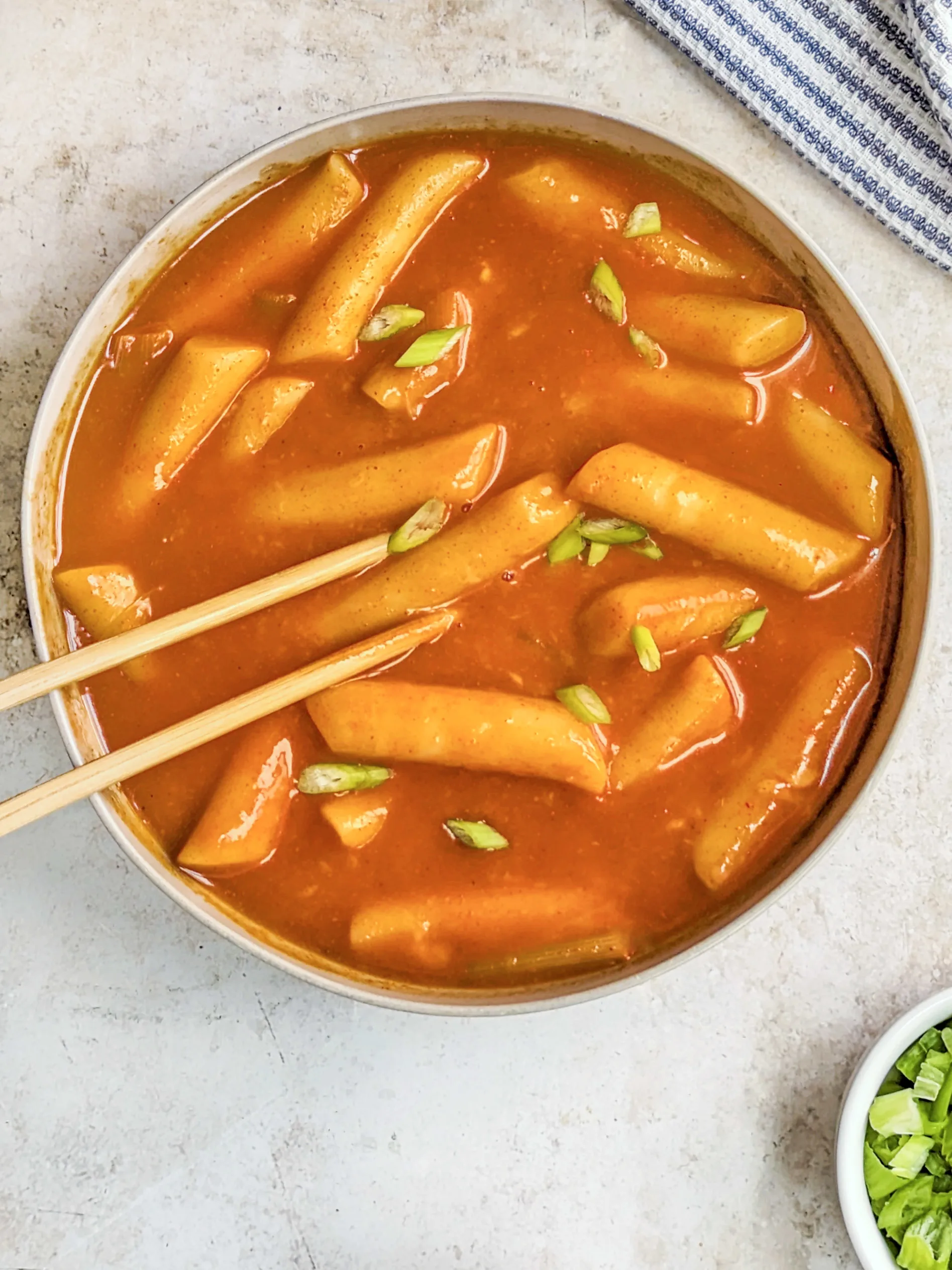
What is Cheesy Tteokbokki?
In Korean cuisine, cheese is a popular ingredient, particularly among street vendors who add melted cheese to traditional meals for a bit of a twist. Cheesy tteokbokki is no exception! Vendors, restaurants, and home cooks enjoy adding gooey cheese to savory tteokbokki simmered in a spicy gochujang-flavored sauce.
And there’s a good reason for it – melted cheese adds a creamy texture and balances the spiciness that may be too hot for some. For others, the cheese is just pure comfort food. Serve cheese tteokbokki hot and fresh with chopped scallions and toasted sesame seeds.
What is Cheese Tteokbokki Made Of?
- Fish Sauce: Traditional tteokbokki broth includes anchovy stock made with dried kelp and anchovies. While I love the flavor, I typically use Chicken Better Than Bouillon, water, and fish sauce for my broth since that’s what I usually have in my pantry. If you want to try anchovy stock without the hassle of making it from scratch, use dashi packets.
- Better than Bouillon: Chicken Better than Bouillon and water creates a quick and easy broth for the rice cakes to cook; you can also use store-bought chicken or vegetable broth.
- Rice Cakes: You will need cylindrical-shaped Korean rice cakes made of rice flour to make cheesy tteokbokki. Find rice cakes in Asian grocery stores; you can use fresh, refrigerated, or frozen rice cakes, but fresh homemade rice cakes are always the best!
- Gochujang: Korean chili paste called gochujang provides sweet heat to our cheese tteokbokki recipe; the flavorful paste contains red pepper flakes, sticky rice, fermented soybean paste, and salt.
- Gochugaru: Contributing to the heat and adding a slightly smoky fragrance, the dried and deseeded chili peppers, or gochugaru, is another Korean staple included in the dish. Check the container for spice level; they are usually labeled mild, medium, or hot to fit your specific needs.
- Sugar: Adjust the amount of sugar you use to achieve the level of sweetness you prefer. Use white sugar, brown sugar, or honey to balance the spiciness.
- Scallions: Scallion whites cook in the umami-rich broth along with the tteok, and I use finely chopped scallion greens to garnish the meal.
- Cheese: Mozzarella cheese is the best for tteokbokki because it melts and stretches well, but feel free to use cheddar, gouda, or parmesan cheese.
Additions and Substitutions
- Add fish cakes to our cheesy tteokbokki recipe; you can find them in the freezer section of local Asian markets. They come in different shapes and sizes, the most popular of which is a large sheet you will need to cut down to size. Korean Bapsang demonstrates how to cut the fish cakes properly; skip to 3:04 for her technique.
- Add ingredients like hard-boiled eggs, soft-boiled eggs, sliced hot dogs, tempura, Korean dumplings, or mandu.
- Prepare a variation called rabokki by including ramen – how delicious does that sound?
- Vegetables can be a great way to take tteokbokki to the next level; I like bok choy, savoy cabbage, and carrots.
How to Make Cheesy Tteokbokki
The full recipe with measurements is in the recipe card below.
Step 1: Soak frozen or packaged rice cakes in hot water for 30 minutes (but at least 10 minutes); drain and set them aside – skip this step if using fresh rice cakes.
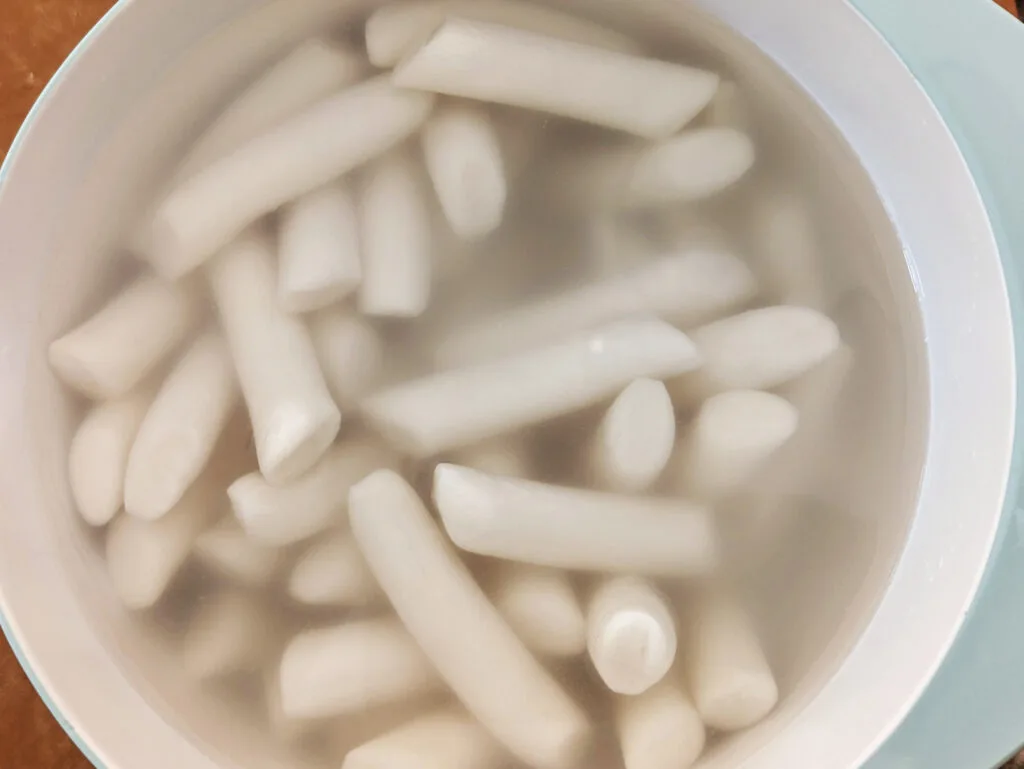
Step 2: Add the water, fish sauce, and Better than Bouillon to a saute pan; bring the mixture to a boil over medium-high heat for 8 minutes, leaving the pan uncovered.
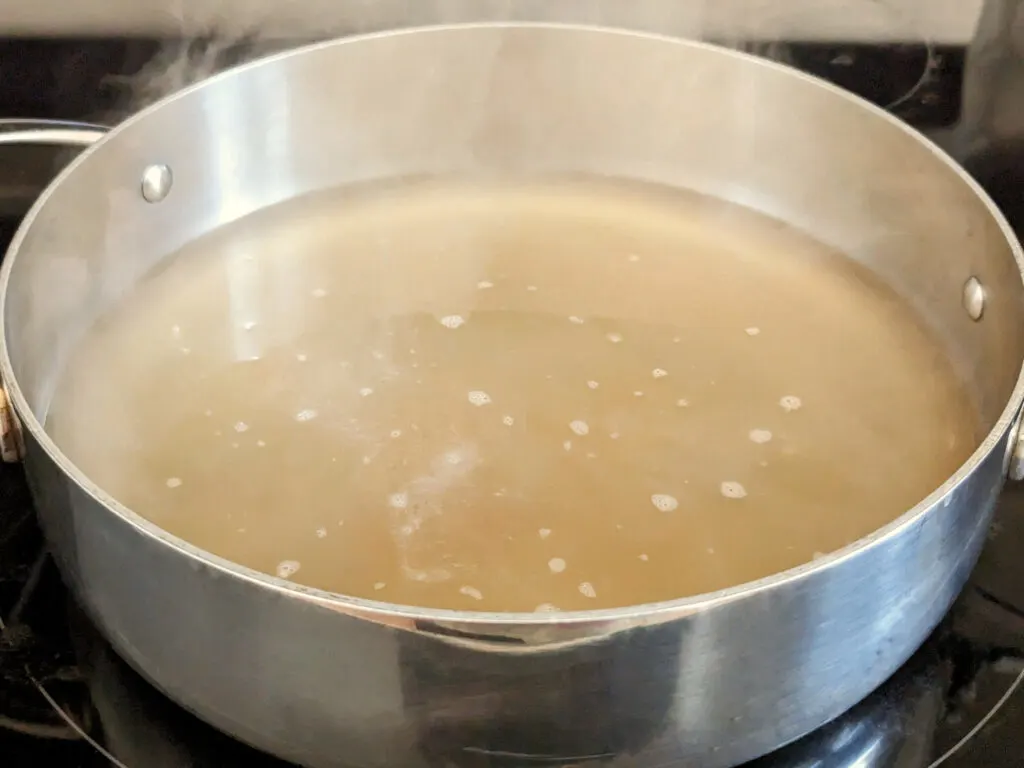
Step 3: Combine gochujang, gochugaru, and sugar, and transfer it to the saute pan.

Step 4: Stir to combine, then add the rice cakes and scallion greens to the pan with the broth.
Reduce the heat and simmer for 15 minutes until the sauce thickens, stirring frequently to prevent the rice cakes from sticking to the pan.
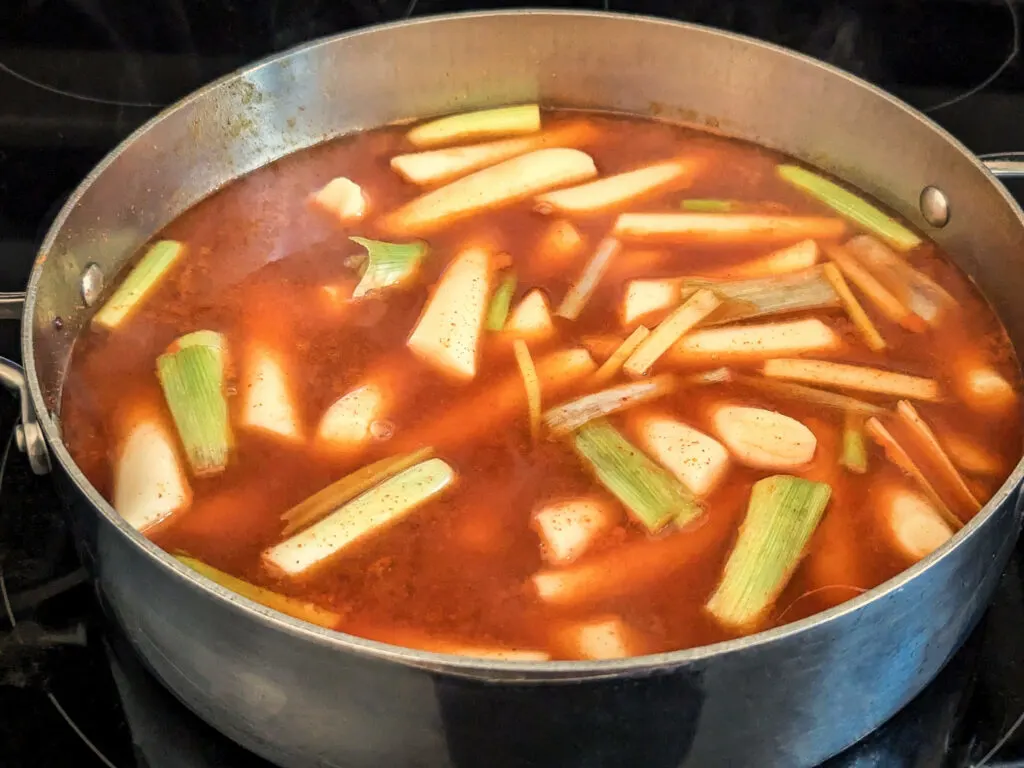
Step 5: Remove the pan from heat and sprinkle the mozzarella over the top. Cover the pan with a lid and let the cheese melt for 2-3 minutes until it becomes gooey and creamy.
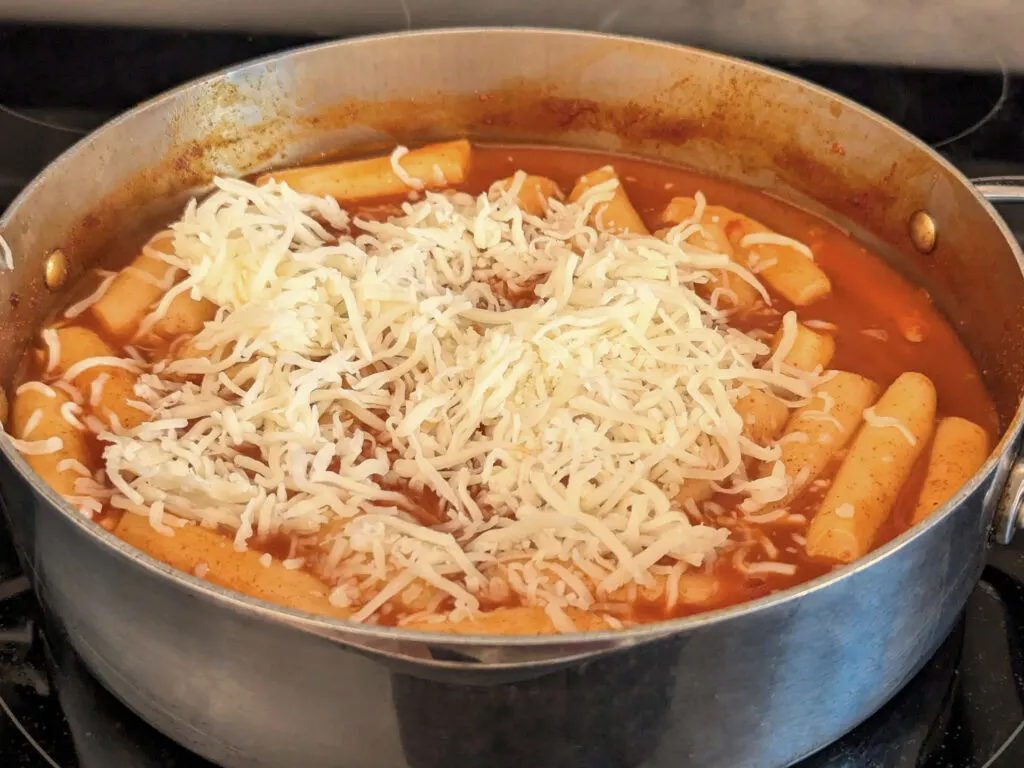
Expert Tips
- If you’re using dried rice cakes, soak them in cold water for about 30 minutes (but at least 10 minutes) before cooking; this will help them to soften and ensure even cooking.
- The spiciness of tteokbokki comes from gochujang (Korean red pepper paste) and gochugaru (Korean red pepper flakes). Adjust the amount of each to your taste preferences. If you prefer a milder version, reduce the amount of each and add more sugar.
- Check the consistency of the rice cakes – the tteokbokki should be soft and bouncy; if the rice cakes aren’t that consistency after 15 minutes, continue cooking for another couple of minutes, but be careful because overcooking them can make the tteok too mushy.
- Add the cheese at the end of the cooking process. Turn off the heat and let the residual heat melt the cheese. Putting the lid on the skillet or pot helps the cheese melt evenly.
Searching for More Like This?
If you love this recipe, try one of these Korean favorites!

Serving Suggestions
- Vegetarian Kimchi Jjigae
- Doenjang Jiigae
- Banchan: spicy cucumber kimchi, spinach, bean sprouts, and cabbage kimchi.
- Twigim
- Kimbap
- Soondae
What to do With the Leftovers
- Refrigerate – Store leftovers in an airtight container for 1-2 days.
- Reheat – Once refrigerated, tteokbokki hardens; I recommend adding a small amount of water before warming it on the stovetop for best results. You may reheat the rice cakes in the microwave, but they will become dense and hard to chew.
- Repurpose – Add the leftovers to ramen or stew.
Frequently Asked Questions
Where can I buy rice cakes?
You will find fish cakes at your local Korean or Asian market; they come freshly made, refrigerated, and frozen. I live near an H-mart, a popular Korean chain, and they always have them on hand. Another place to look is Whole Foods.
Is cheese tteokbokki spicy?
I understand that not everyone handles spice the same way; to err on the side of caution, I would say tteokbokki is pretty spicy. If you have low tolerance, reduce the amount of gochujang and eliminate the gochugaru. You can also increase the bouillon or add sugar to create more balance.

Cheesy Tteokbokki
- 1 bag rice cakes, cylinder-shaped
- 4 cups water
- 2 tablespoon fish sauce
- 1 teaspoon Chicken Better than Bouillon
- 7 scallions, whites, and greens separated; whites cut into 2-inch pieces, and greens thinly sliced
- ¼ cup gochujang
- 1 tablespoon gochugaru
- 1 teaspoon granulated white sugar
- 1 cup mozzarella cheese, shredded
- 1 teaspoon toasted sesame seeds, for garnish
- Soak frozen or packaged rice cakes in hot water for 30 minutes (but at least 10 minutes); drain and set them aside – skip this step if using fresh rice cakes.
- Add the water, fish sauce, and Better than Bouillon to a saute pan; bring the mixture to a boil over medium-high heat for 8 minutes, leaving the pan uncovered.
- Combine gochujang, gochugaru, and sugar, and transfer it to the saute pan; stir to combine, then add the rice cakes and scallion greens to the pan with the broth.
- Reduce the heat and simmer for 15 minutes until the sauce thickens, stirring frequently to prevent the rice cakes from sticking to the pan.
- Check the consistency – the tteokbokki should be soft and bouncy; if the rice cakes haven’t reached that consistency, continue cooking for another couple of minutes.
- Remove the pan from heat and sprinkle the mozzarella over the top. Cover the pan with a lid and let the cheese melt for 2-3 minutes until it becomes gooey and creamy.
- If you’re using dried rice cakes, soak them in cold water for about 30 minutes (but at least 10 minutes) before cooking; this will help them to soften and ensure even cooking.
- The spiciness of tteokbokki comes from gochujang (Korean red pepper paste) and gochugaru (Korean red pepper flakes). Adjust the amount of each to your taste preferences. If you prefer a milder version, reduce the amount of each and add more sugar.
- Check the consistency of the rice cakes – the tteokbokki should be soft and bouncy; if the rice cakes aren’t that consistency after 15 minutes, continue cooking for another couple of minutes, but be careful because overcooking them can make the tteok too mushy.
- Add the cheese at the end of the cooking process. Turn off the heat and let the residual heat melt the cheese. Putting the lid on the skillet or pot helps the cheese melt evenly.
- The nutritional information shown is an estimate provided by an online nutrition calculator. It should not be considered a substitute for professional advice.

